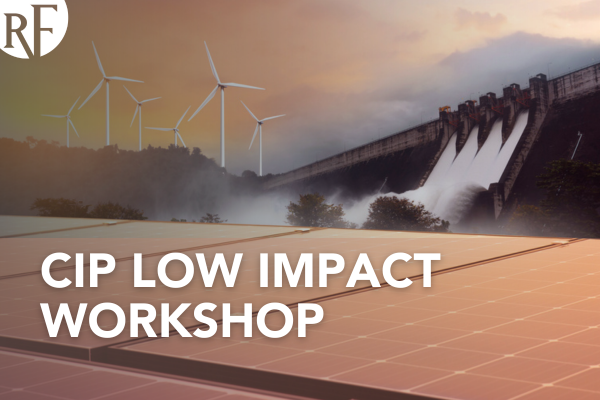The post First Things RFirst: July 2025 appeared first on ReliabilityFirst.
]]>
First Things RFirst: July 2025
Expert analysis for a more reliable, secure and resilient electric grid, plus news and updates for RF stakeholders.
Insights & Analysis
RF report highlights cold weather winterization best practices for entities
For the past decade, RF has led a Cold Weather Winterization outreach program dedicated to promoting generator preparedness and enhancing grid reliability during extreme cold weather events. Our 2024-2025 report outlines best practices identified during site visits at 20 power plants from across the RF region.

Regulatory Affairs: Grid reliability news we’re tracking
The latest regulatory headlines we’re tracking include:
- NERC SVP presents takeaways from Iberian Peninsula outages to FERC
- FERC withdraws notice of inquiry on the CIP standards, issues final rule approving CIP-015-1
- DOE announces new vulnerability intelligence solution
News & Updates
NERC issues 2025 State of Reliability Assessment
NERC released its 2025 State of Reliability Assessment in June, finding that the North American bulk power system (BPS) continued to be reliable and resilient in 2024.
Undertaken annually, this report provides objective and concise information for policymakers and industry leaders on issues that affect the reliability and resilience of the North American BPS while providing strong technical support for those interested in the underlying data and detailed analytics.
The 2025 report shows that today’s transmission system is demonstrably more reliable and resilient with the severity and duration of outages declining, and system restoration times growing shorter. However, newer and emerging risks are challenging grid reliability in new ways, which will require agility to better assess these risks, and develop and implement mitigations, all while the system undergoes rapid transformation.
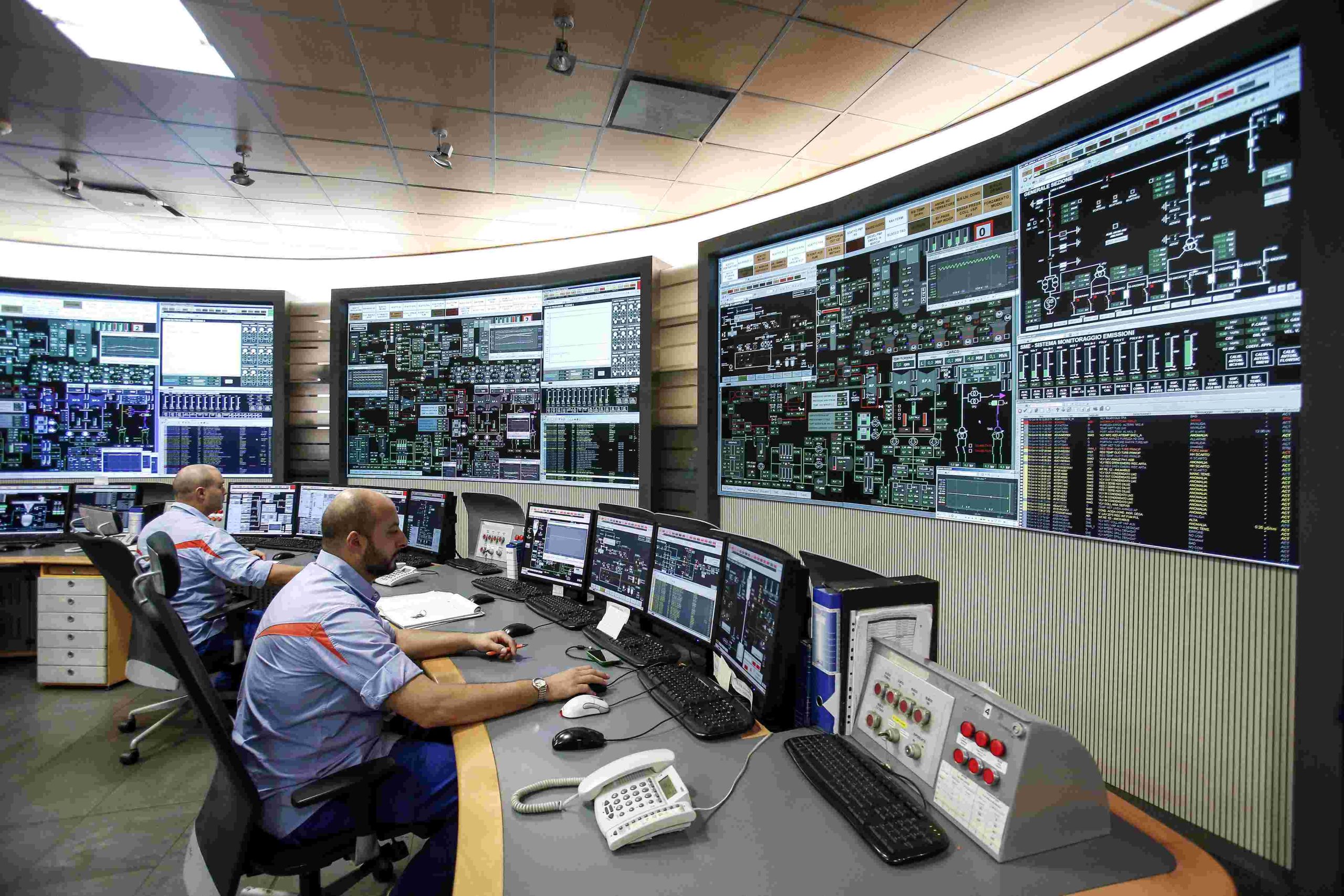 NERC report analyzes loss of monitoring and control due to communication failure between control centers
NERC report analyzes loss of monitoring and control due to communication failure between control centers
NERC shared a new Lesson Learned document on June 25, analyzing how communication failure between control centers can cause system operators to lose both monitoring and control capabilities over their energy management system (EMS) production systems. The report outlines three anonymized, relevant cases, the respective corrective actions that were taken, and a list of lessons learned that aim to provide industry with technical and understandable information to help maintain the reliability of the bulk power system.
Click here to read the full document
Upcoming Events
July 21, 2- 3:30 p.m. ET | Tech Talk with RF
Coming up on the July edition of Tech Talk with RF, we’re focusing on power plant winterization best practices. The general manager at Hamilton Liberty Power Plant, located in northeastern Pennsylvania, will share his organization’s experience with RF’s power plant winterization site visit program. We’ll also have an overview of the new NERC Modernization of Standards Processes and Procedures Task Force.
Aug. 18, 2- 3:30 p.m. ET | Tech Talk with RF
Save the date for our August edition of Tech Talk with RF on Monday, Aug. 18! Stay tuned for agenda details to be posted on our website calendar and LinkedIn feed.
 Aug. 6, 9 a.m. – 1 p.m. ET | Protection System Workshop
Aug. 6, 9 a.m. – 1 p.m. ET | Protection System Workshop
Register now for RF’s 11th Annual Protection System Workshop on Aug. 6, 2025! This free event will be held virtually via WebEx. We’ll have presentations on the application of large language models for protection relay settings configuration; ride-through requirements for IBRs in NERC Reliability Standard PRC-029 vs. IEEE std 2800-2022; virtualization of protection systems in distribution design, implementation, and performance testing; and more!
 Aug. 7, 9 a.m. – 1 p.m. ET | Human Performance Workshop
Aug. 7, 9 a.m. – 1 p.m. ET | Human Performance Workshop
Register now for RF’s 8th Annual Human Performance Workshop on Aug. 7, 2025! This free event will be held virtually via WebEx. We’ll have presentations on how to use AI to improve safety communication and leadership in the field; reducing injury and preserving the industrial athlete; improving content retention in training and learning; and more!
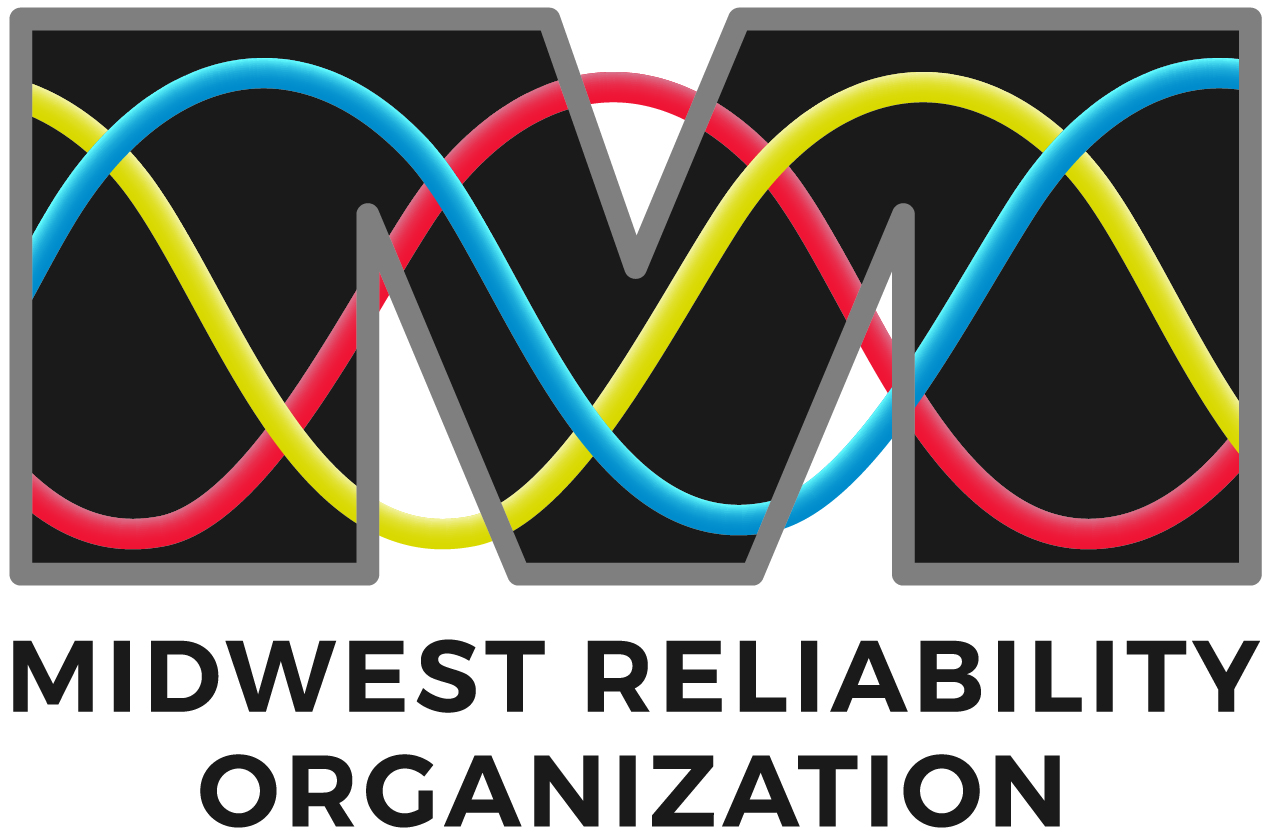
Aug. 13, 10 a.m. – 12 p.m. ET | Inverter-Based Resources (IBR) Webinar
MRO will host an informational webinar on risks associated with the integration of IBRs into the bulk power system, as well as important registration and compliance considerations for Category 2 IBR Generator Owners and Operators.
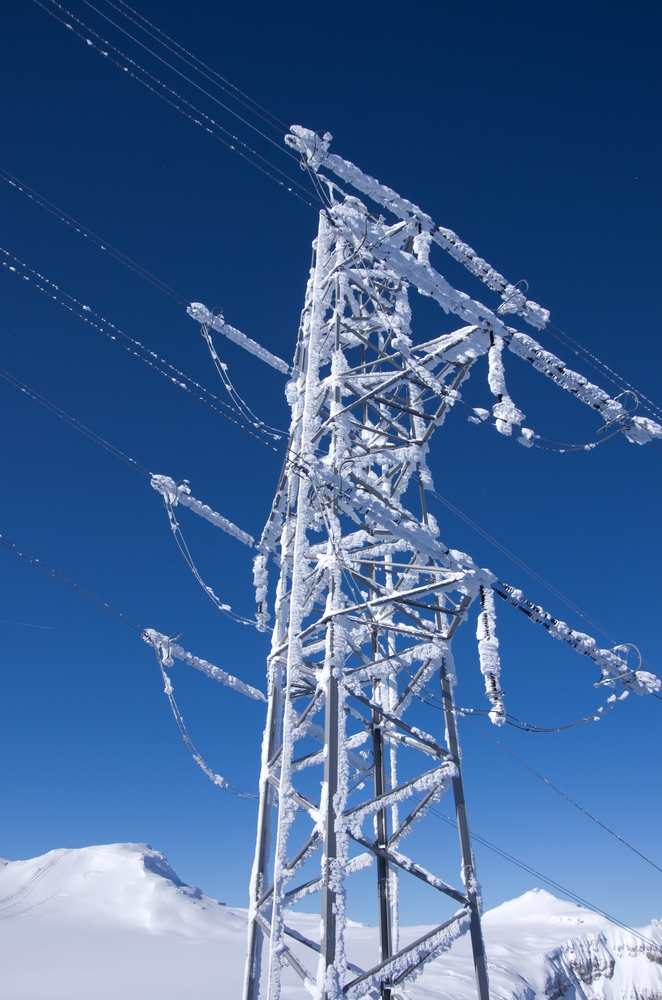 Aug. 18 – 22, 2025 | Cold Weather Preparedness Small Group Advisory Sessions
Aug. 18 – 22, 2025 | Cold Weather Preparedness Small Group Advisory Sessions
NERC and the Regional Entities, including ReliabilityFirst, will host Small Group Advisory Sessions (SGAS) to discuss the implementation of the Extreme Cold Weather Preparedness Standard, EOP-012-3. While this standard is still awaiting final FERC approval after it was filed with the commission in April, it has a proposed effective date of Oct. 1, 2025.
These meetings are tentatively planned for the week of Aug. 18, 2025, and will be held virtually via Webex. There will be a general session to discuss EOP-012-3 on Monday, Aug. 18. Then, SGAS One-on-One Sessions are planned for Tuesday, Aug. 19 – Friday, Aug. 22. These will be closed, one-on-one discussions between a registered entity’s Subject Matter Experts (SMEs) and ERO Enterprise staff about issues pertinent to that entity’s implementation of EOP-012-3 and any other cold weather-related concerns.
NERC will schedule the one-on-one sessions after registration is received and is coordinated with Regional Entity staff.
Aug. 19-21, 2025 | CIP Low Impact Workshop
Register now for RF’s CIP Low Impact Workshop on Aug. 19-21, held in-person at the RF Office in Cleveland. The workshop will give attendees the opportunity to improve their understanding of security and compliance for CIP assets containing low impact BES Cyber Systems.
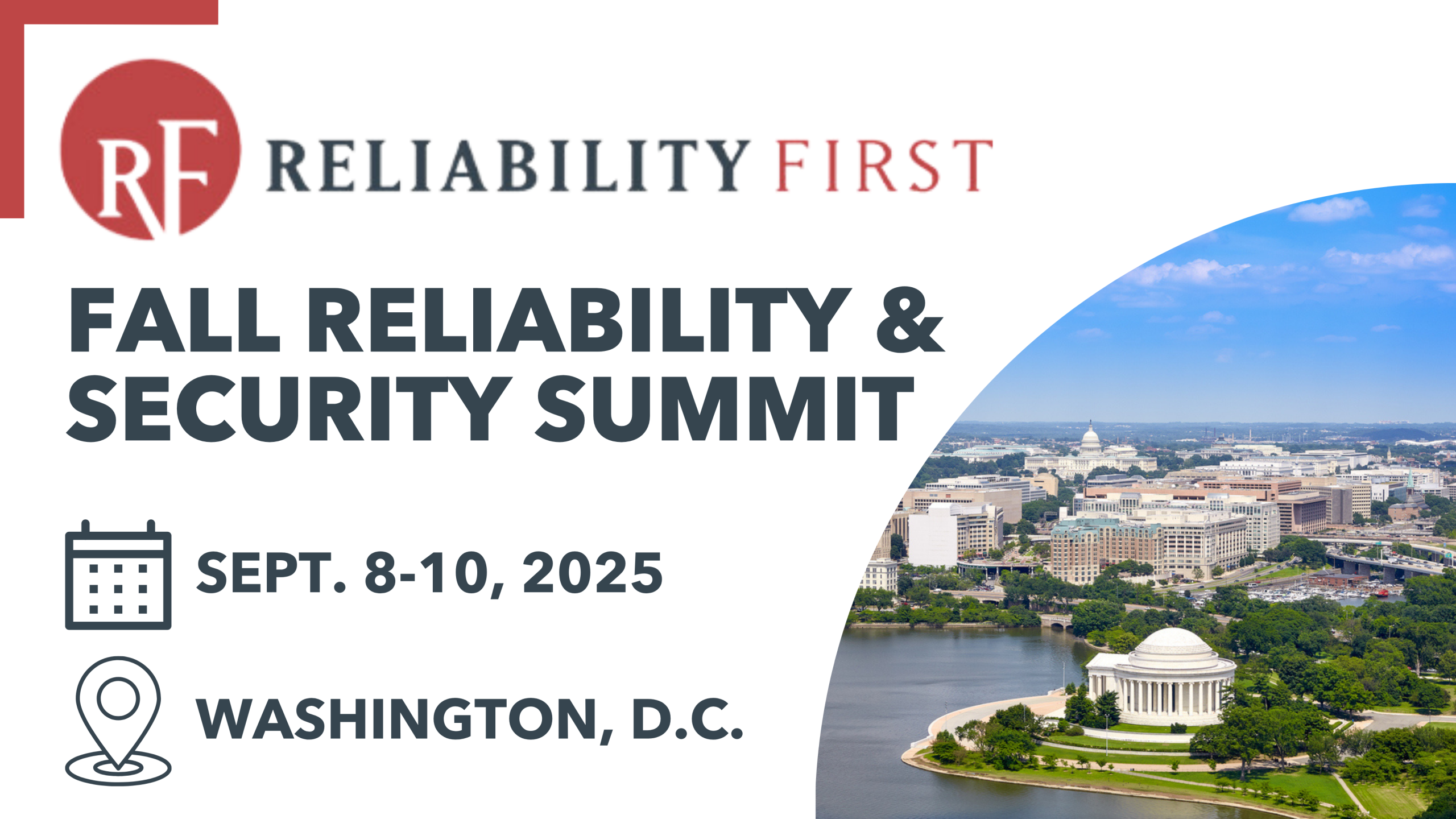 Sept. 8-10, 2025 | RF Fall Reliability & Security Summit
Sept. 8-10, 2025 | RF Fall Reliability & Security Summit
Register now for RF’s Fall Reliability & Security Summit. This year’s event will be hosted at the MGM National Harbor just outside of Washington, D.C.
We’ll kick things off with an evening reception and our Reliability Recognition Awards Ceremony on Monday, Sept. 8.
Then, we have an exciting agenda on Tuesday, Sept. 9, where we’ll be joined by key players from across the electric industry, including:
- FERC Commissioner David Rosner
- NERC President & CEO Jim Robb
- RF President & CEO Tim Gallagher
- PJM President & CEO Manu Asthana
- AEP President & CEO Bill Fehrman
- LS Power CEO Paul Segal
- PPL Electric Utilities President Christine Martin
- FERC Director of Office of Energy Infrastructure Security Joe McClelland
- And more!
Finally, on Wednesday, Sept. 10, attendees will be able to choose from three half-day tracks, depending on which focus area makes the most sense for them. These include an energy policy leadership session, an internal controls workshop for experienced registered entity personnel, and a NERC 101 primer for new registered entities.
The full agenda and registration link are available on our website. We hope to see you there!
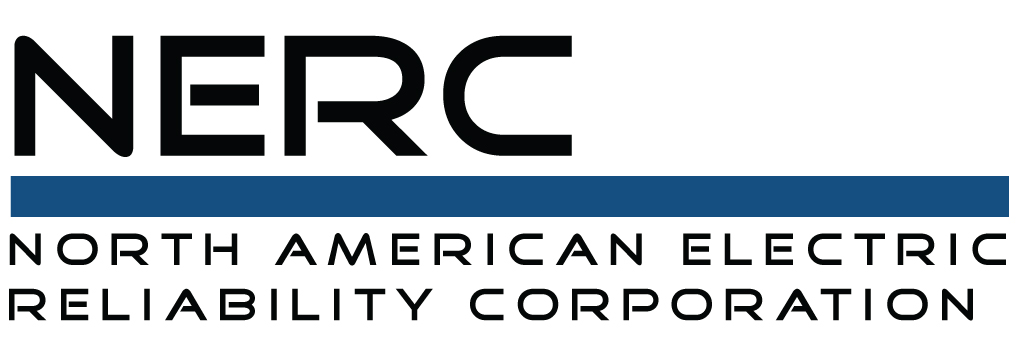 Nov. 18-19, 2025 | GridEx VIII
Nov. 18-19, 2025 | GridEx VIII
GridEx is the largest grid security exercise in North America, hosted every two years by the NERC Electricity Information Sharing and Analysis Center (E-ISAC). It offers E-ISAC member and partner organizations a forum in which to practice how they would respond to and recover from coordinated cyber and physical security threats and incidents.
The last event in 2023 saw more than 15,000 participants come together from approximately 250 North American organizations, including the electric industry, cross-sector partners from gas and telecommunications, and U.S. and Canadian government partners.
To explore our full calendar of upcoming events, click here.
The post First Things RFirst: July 2025 appeared first on ReliabilityFirst.
]]>The post Regulatory Affairs news highlights: July 2025 appeared first on ReliabilityFirst.
]]>
Recent regulatory headlines we’re tracking include:
NERC SVP presents takeaways from Iberian Peninsula outages to FERC
During the FERC June open meeting, NERC SVP & Chief Engineer Mark Lauby gave a presentation on takeaways from the recent Iberian Peninsula outages that affected all of Spain and Portugal and portions of France.
Lauby provided an overview of the outages and the event analysis reports issued by the Spanish government and the local grid operator, explaining that according to the reports, traditional synchronous generation could not control high voltage resulting from frequency oscillations during the event.
Lauby also went over the recommendations from the reports, pointing out that several recommended actions are things that the U.S. already does. For example, FERC and NERC already require that all generation units capable of voltage regulation, including IBRs, provide that regulation (per VAR-002-4 and Order 827).
The reports also recommended enhanced voltage control resources such as synchronous condensers, static VAR compensators and static synchronous compensators, all of which are already in place in the U.S. To listen to the full presentation and discussion, the June open hearing is available here.
FERC withdraws notice of inquiry on the CIP standards, issues final rule approving CIP-015-1
FERC issued a Withdrawal of Notice of Inquiry and Termination of Rulemaking Proceeding on June 26. The move withdraws a 2020 Notice of Inquiry (NOI) on whether the CIP Standards adequately addressed data security risks, detection of anomalies/events, and mitigation of cybersecurity events. The NOI also sought comment on the potential risk of a coordinated cyberattack on geographically distributed targets and how to address that risk via the CIP Standards.
FERC explained that it decided to withdraw the NOI because since the time of its issuance, FERC and NERC have taken actions to address the issues discussed in the NOI, including approving CIP-012-1 (Communications Between Control Centers), CIP-003-9 (Security Management Controls), as well as modifications to the CIP Standards to require protections regarding data communicated between control centers.
FERC also issued a final rule (Order 907) approving Reliability Standard CIP-015-1 (Cyber Security – Internal Network Security Monitoring). CIP-015-1 was developed in response to a FERC directive in Order No. 887. The new standard requires internal network security monitoring (INSM) for all high impact bulk electric system (BES) Cyber Systems with and without external routable connectivity, and for medium impact BES Cyber Systems with external routable connectivity. FERC explained that INSM enhances cyber security because it provides early warning of situations where perimeter network defenses are breached by detecting intrusions and malicious activity within a trust zone.
The final rule also directs NERC to develop modifications to CIP-015, to extend internal network security monitoring to include electronic access control or monitoring systems and physical access control systems outside the electronic security perimeter. These modifications are due within one year.
DOE announces new vulnerability intelligence solution
The Department of Energy (DOE)’s Office of Cybersecurity, Energy Security, and Emergency Response (CESER) announced that it has created a new vulnerability intelligence solution on June 24. The V-INT: Automated Vulnerability Intelligence and Risk Assessment enables companies to “conduct realistic attack simulations to provide a clear view of how their vulnerabilities appear from an attacker’s perspective.”
The effort was a partnership between CESER, cybersecurity companies Bastazo and Network Perception, and the University of Arkansas. Additional information can be found here.
The post Regulatory Affairs news highlights: July 2025 appeared first on ReliabilityFirst.
]]>The post State Energy Insights from ReliabilityFirst: July 2025 appeared first on ReliabilityFirst.
]]>
State Energy Insights: July 2025
Grid Reliability and Regulatory Updates from ReliabilityFirst
News & Updates
 NERC issues 2025 State of Reliability Assessment
NERC issues 2025 State of Reliability Assessment
NERC released its 2025 State of Reliability Assessment in June, finding that the North American bulk power system (BPS) continued to be reliable and resilient in 2024.
Undertaken annually, this report provides objective and concise information for policymakers and industry leaders on issues that affect the reliability and resilience of the North American BPS while providing strong technical support for those interested in the underlying data and detailed analytics.
The 2025 report shows that today’s transmission system is demonstrably more reliable and resilient with the severity and duration of outages declining, and system restoration times growing shorter. However, newer and emerging risks are challenging grid reliability in new ways, which will require agility to better assess these risks, and develop and implement mitigations, all while the system undergoes rapid transformation.
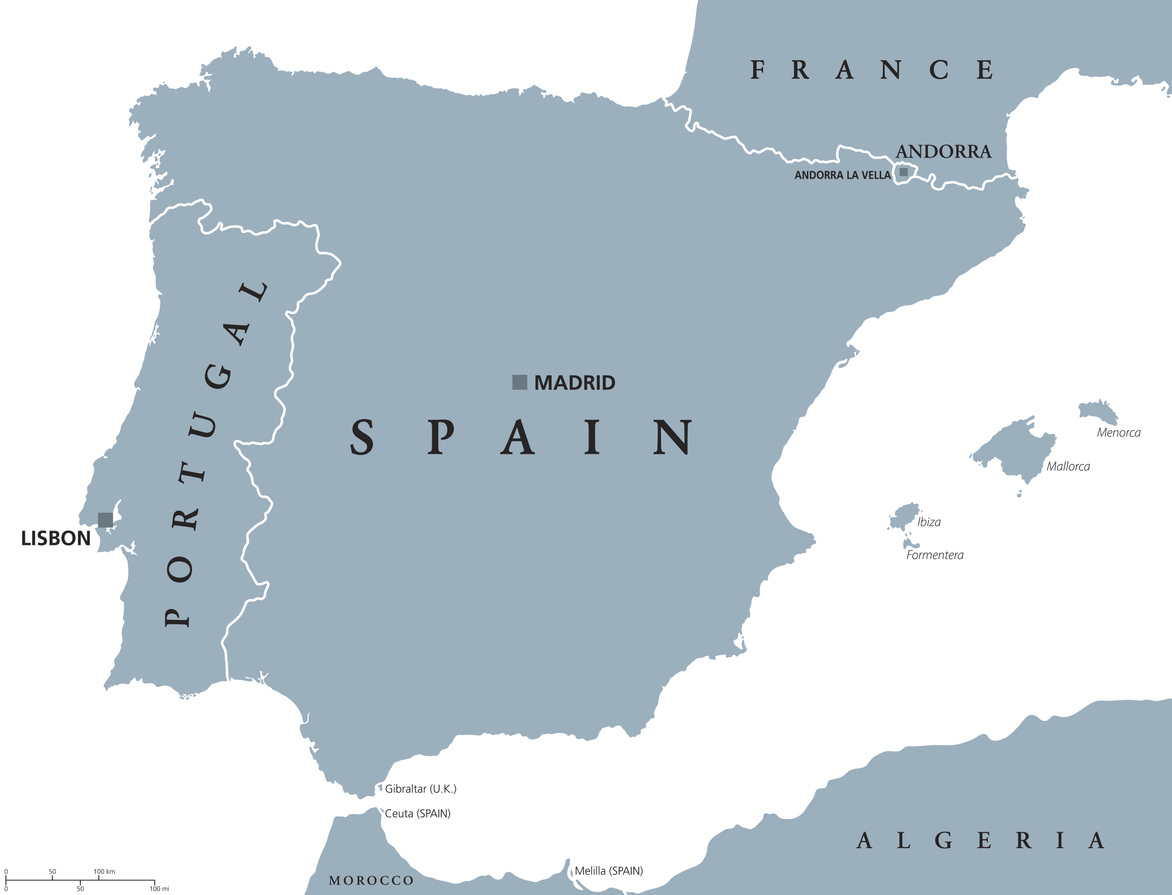 NERC SVP presents takeaways from Iberian Peninsula outages to FERC
NERC SVP presents takeaways from Iberian Peninsula outages to FERC
During the FERC June open meeting, NERC SVP & Chief Engineer Mark Lauby gave a presentation on takeaways from the recent Iberian Peninsula outages that affected all of Spain and Portugal and portions of France.
Lauby provided an overview of the outages and the event analysis reports issued by the Spanish government and the local grid operator, explaining that according to the reports, traditional synchronous generation could not control high voltage resulting from frequency oscillations during the event.
Lauby also went over the recommendations from the reports, pointing out that several recommended actions are things that the U.S. already does. For example, FERC and NERC already require that all generation units capable of voltage regulation, including IBRs, provide that regulation (per VAR-002-4 and Order 827).
The reports also recommended enhanced voltage control resources such as synchronous condensers, static VAR compensators and static synchronous compensators, all of which are already in place in the U.S. To listen to the full presentation and discussion, the June open hearing is available here.
Upcoming Events
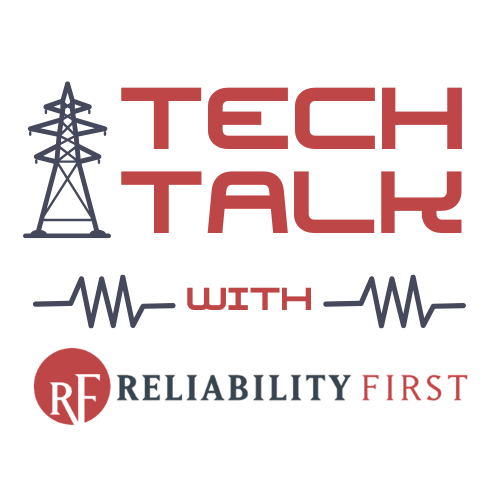
July 21, 2-3:30 p.m. ET | Tech Talk with RF
Coming up on the July edition of Tech Talk with RF, we’re focusing on power plant winterization best practices. The general manager at Hamilton Liberty Power Plant, located in northeastern Pennsylvania, will share his organization’s experience with RF’s power plant winterization site visit program. We’ll also have an overview of the new NERC Modernization of Standards Processes and Procedures Task Force.

July 24, 10-11 a.m. ET | FERC Open Meeting
The Federal Energy Regulatory Commission (FERC) will hold an open meeting on Thursday, July 24. There will be a webcast link available on the FERC website.
 Sept. 8-10, 2025 | RF Fall Reliability & Security Summit
Sept. 8-10, 2025 | RF Fall Reliability & Security Summit
Register now for RF’s Fall Reliability & Security Summit. This year’s event will be hosted at the MGM National Harbor just outside of Washington, D.C.
We’ll kick things off with an evening reception and our Reliability Recognition Awards Ceremony on Monday, Sept. 8.
Then, we have an exciting agenda on Tuesday, Sept. 9, where we’ll be joined by key players from across the electric industry, including:
- FERC Commissioner David Rosner
- NERC President & CEO Jim Robb
- RF President & CEO Tim Gallagher
- PJM President & CEO Manu Asthana
- AEP President & CEO Bill Fehrman
- LS Power CEO Paul Segal
- FERC Director of Office of Energy Infrastructure Security Joe McClelland
- And more!
Finally, on Wednesday, Sept. 10, attendees will be able to choose from three half-day tracks, depending on which focus area makes the most sense for them. These include an energy policy leadership session, an internal controls workshop for experienced registered entity personnel, and a NERC 101 primer for new registered entities.
The full agenda and registration link are available on our website. We hope to see you there!
The post State Energy Insights from ReliabilityFirst: July 2025 appeared first on ReliabilityFirst.
]]>The post First Things RFirst: June 2025 appeared first on ReliabilityFirst.
]]>
First Things RFirst: June 2025
Expert analysis for a more reliable, secure and resilient electric grid, plus news and updates for RF stakeholders.
Insights & Analysis
RF issues Summer Reliability Assessment
ReliabilityFirst (RF) projects both the MISO and PJM areas to have adequate resources to serve normal electric demand in the upcoming summer season, including during expected periods in which certain generation resources become unavailable.
However, if resource outages and/or demand are experienced beyond the established projections, there is an increased likelihood that corrective actions (like Load Modifying Resources and Operating Reserves) would need to be utilized to serve forecasted load. This risk of resource unavailability requiring corrective actions to be taken is elevated in the MISO area and low in the PJM area.
Regulatory Affairs: Grid reliability news we’re tracking
The latest regulatory headlines we’re tracking include:
- House subcommittee holds hearing on meeting growing energy demand
- FERC holds technical conference on resource adequacy
- FERC issues 2025 Summer Assessment
News & Updates
Three NERC Reliability Standard updates coming soon that registered entities should be aware of
NERC Reliability Standards are continually evolving, and ReliabilityFirst (RF) is here to help with what registered entities need to know, including potential impacts to your compliance program and when new standard versions will become effective. As we enter the later part of 2025, we can anticipate changes to the following:
- IRO-010-5: Reliability Coordinator Data and Information Specification and Collection
- TOP-003-6.1: Transmission Operator and Balancing Authority Data and Information Specification and Collection
- TOP-002-5: Operations Planning
 NERC issues 2025 Summer Reliability Assessment
NERC issues 2025 Summer Reliability Assessment
NERC released its annual 2025 Summer Reliability Assessment on May 14.
The assessment predicts that all regions of the North American electric grid are expected to have sufficient resources under normal operating and weather conditions this summer, but that some regions (specifically MISO, SPP, ERCOT, and parts of New England) may face supply shortfall risks during periods of extreme heat.
NERC also published an infographic and a video highlighting some of the key findings in the assessment.
 Cold Weather Preparedness Small Group Advisory Sessions to be held in August
Cold Weather Preparedness Small Group Advisory Sessions to be held in August
NERC and the Regional Entities, including ReliabilityFirst, will host Small Group Advisory Sessions (SGAS) to discuss the implementation of the Extreme Cold Weather Preparedness Standard, EOP-012-3. While this standard is still awaiting final FERC approval after it was filed with the commission in April, it has a proposed effective date of Oct. 1, 2025.
These meetings are tentatively planned for the week of Aug. 18, 2025, and will be held virtually via Webex. There will be a general session to discuss EOP-012-3 on Monday, Aug. 18. Then, SGAS One-on-One Sessions are planned for Tuesday, Aug. 19 – Friday, Aug. 22. These will be closed, one-on-one discussions between a registered entity’s Subject Matter Experts (SMEs) and ERO Enterprise staff about issues pertinent to that entity’s implementation of EOP-012-3 and any other cold weather-related concerns.
NERC will schedule the one-on-one sessions after registration is received and is coordinated with Regional Entity staff.
Upcoming Events
June 16, 2- 3:30 p.m. ET | Tech Talk with RF
Coming up on the June edition of Tech Talk with RF, we’ll examine two recent international power grid disturbances and then take a deep dive into the growing impact of inverter-based resources (IBRs) on system performance and planning, focusing on both current and projected trends within the RF footprint.
July 21, 2- 3:30 p.m. ET | Tech Talk with RF
Save the date for our July edition of Tech Talk with RF on July 21! Stay tuned for agenda details to be posted on our website calendar and LinkedIn feed.
July 16, 9 a.m. – 3:30 p.m. CT | Texas RE Evolving Grid Workshop
Texas RE will hold an Evolving Grid Workshop to explore the reliability and security issues for the Texas Interconnection in 2034. The workshop will focus on the trends that will influence electric reliability and security over the next ten years and beyond.
 Aug. 6, 9 a.m. – 1 p.m. ET | Protection System Workshop
Aug. 6, 9 a.m. – 1 p.m. ET | Protection System Workshop
Register now for RF’s 11th Protection System Workshop on Aug. 6, 2025. This event will be held virtually via WebEx. The agenda and additional information are currently being developed and will be available soon.
 Aug. 7, 9 a.m. – 1 p.m. ET | Human Performance Workshop
Aug. 7, 9 a.m. – 1 p.m. ET | Human Performance Workshop
Register now for RF’s 8th Annual Human Performance Workshop on Aug. 7, 2025. This event will be held virtually via WebEx. The agenda and additional information are currently being developed and will be available soon.
Aug. 19-21, 2025 | CIP Low Impact Workshop
Register now for RF’s CIP Low Impact Workshop on Aug. 19-21, held in-person at the RF Office in Cleveland. The workshop will give attendees the opportunity to improve their understanding of security and compliance for CIP assets containing low impact BES Cyber Systems.
 Sept. 8-10, 2025 | RF Fall Reliability & Security Summit
Sept. 8-10, 2025 | RF Fall Reliability & Security Summit
Save the date for RF’s 2025 Fall Reliability & Security Summit! This year’s event is planned for Sept. 8-10 in the Washington, D.C., area. Stay tuned for more details.
 Nov. 18-19, 2025 | GridEx VIII
Nov. 18-19, 2025 | GridEx VIII
GridEx is the largest grid security exercise in North America, hosted every two years by the NERC Electricity Information Sharing and Analysis Center (E-ISAC). It offers E-ISAC member and partner organizations a forum in which to practice how they would respond to and recover from coordinated cyber and physical security threats and incidents.
The last event in 2023 saw more than 15,000 participants come together from approximately 250 North American organizations, including the electric industry, cross-sector partners from gas and telecommunications, and U.S. and Canadian government partners.
To explore our full calendar of upcoming events, click here.
The post First Things RFirst: June 2025 appeared first on ReliabilityFirst.
]]>The post Three NERC Reliability Standard updates coming soon that registered entities should be aware of appeared first on ReliabilityFirst.
]]>NERC Reliability Standards are continually evolving, and ReliabilityFirst (RF) is here to help with what registered entities need to know, including potential impacts to your compliance program and when new standard versions will become effective. As we enter the later part of 2025, we can anticipate changes to the following:
- IRO-010-5: Reliability Coordinator Data and Information Specification and Collection
- TOP-003-6.1: Transmission Operator and Balancing Authority Data and Information Specification and Collection
- TOP-002-5: Operations Planning
IRO-010-5 and TOP-003-6.1
NERC’s Project 2021-06 focuses on updating IRO-010-5, ensuring Reliability Coordinators have the data and information needed to plan, monitor, and assess the operation of their Reliability Coordinator Area; and TOP-003-6.1, ensuring Transmission Operators (TOP) and Balancing Authorities (BA) have the data and information needed to plan, monitor, and asses the operations of the TOP or BA area. Both of these updates will become effective July 1, 2025.
What’s changing?
Overall, changes were made to both standards to allow flexibility for both those requesting and receiving data and information by not having a prescriptive process of what is required through the standard. The updates include expanding IRO-010-5 and TOP-003-6.1 R1 to allow requestors and respondents to address issues through processes they establish, including deadlines, performance criteria, as well as data corrections and updates. This should foster collaboration and drive success by making it easier for both parties to request and receive data and information through their agreed upon process.
The new versions also enhanced the “data specification” approach to reduce the administrative burdens of excessive data retention. They now use both data and information to better describe the broader scope of requirements that an entity considers necessary to perform the four reliability tasks: Operational Planning Analysis, Real-time Assessments, Real-time monitoring, and Balancing Authority analysis functions.
Although considered, no requirements were retired as a result of the Standards Drafting Team’s review under Project 2021-06.
For a detailed summary of the changes made to IRO-010-5, please refer to the Technical Rationale for Reliability Standard IRO-010-5.
For a detailed summary of the changes made to TOP-003-6.1, please refer to the Technical Rationale for Reliability Standard TOP-003-6.
TOP-002-5
Part of NERC’s Project-2021-07 focuses on updating TOP-002-5¹, which ensures that Transmission Operators and Balancing Authorities have plans for operating within specified limits. It will become effective Oct. 1, 2025.
This stems from recommendations included in the February 2021 Cold Weather Outages FERC, NERC and Regional Entity Staff Report, which request applicable registrations provide more specificity around the roles of Generator Owners, Generator Operators and Balancing Authorities in determining the generating unit capacity that can be relied upon during cold weather events.
What’s changing?
TOP-002-5 R8 is a newly added requirement which states that each Balancing Authority shall have an extreme cold weather Operating Process for its Balancing Authority Area, addressing preparations for operations during extreme cold weather periods.
The content of Requirement R8 is similar to what is required in the Operating Plan in Requirement R4 except for Interchange Scheduling which is not required here because this function is typically done in real time on an hourly basis. The Balancing Authority is now required to address the increased uncertainty related to these extreme weather events in a manner appropriate and adequate for their Balancing Authority Area. Each Balancing Authority can develop a methodology consistent with the requirement they feel provides the best solutions to sustain an adequate level of reliability during an upcoming extreme cold weather event.
For a detailed summary of the changes made to TOP-002-5, please refer to the Technical Rationale and for TOP-002-5.
Additional references:
White Paper for 2021-06 Modifications to IRO-010 and TOP-003: https://www.nerc.com/pa/Stand/202105%20Modifications%20to%20IRO010%20and%20TOP003%20DL/2021-06_Mod_to_IRO-010_and_TOP-003_White_Paper_Clean_05052023.pdf
IRO-010-5: https://www.nerc.com/pa/Stand/Reliability%20Standards/IRO-010-5.pdf
TOP-003-6.1: https://www.nerc.com/pa/Stand/Reliability%20Standards/TOP-003-6.1.pdf
TOP-002-5: https://www.nerc.com/pa/Stand/Reliability%20Standards/TOP-002-5.pdf
- EOP-012-2 is the other Standard under Project-2021-07, which became effective Oct. 1, 2024.
The post Three NERC Reliability Standard updates coming soon that registered entities should be aware of appeared first on ReliabilityFirst.
]]>The post Regulatory Affairs news highlights: June 2025 appeared first on ReliabilityFirst.
]]>
Recent regulatory headlines we’re tracking include:
House subcommittee holds hearing on meeting growing energy demand
The House Committee on Energy and Commerce’s Energy Subcommittee held a hearing on “Assuring Abundant, Reliable American Energy to Power Innovation” on April 30.
The witnesses at the hearing included Mike Goff, acting undersecretary of energy at the Department of Energy; David Morenoff, acting general counsel at FERC; and Terry Turpin, director of the Office of Energy Projects at FERC. The witness testimonies are included at the hyperlinks added to each witness’s name above.
There was general consensus among the witnesses and House members that it is important to add significant amounts of new generation to the system to meet the growing demand created in part by artificial intelligence (AI) and data centers. There was also bipartisan agreement on the importance of being competitive with China in the “AI race.”
While many at the hearing agreed that generation of all types will be needed to meet demand, debate centered around the proper mix of and incentives for renewables vs. dispatchable generation, and the specifics of recent executive actions of the Trump administration related to energy policy. Morenoff noted that given the country’s recent rapid load growth, it is important to add new resources to the system as well as retain existing ones.
The recorded hearing is available to stream online here.
There were several early versions of draft bills discussed during the hearing that had a reliability focus, including the Reliable Power Act, the GRID Power Act, the Power Plant Reliability Act of 2025, the Reliability Protection for States Act, the Electric Supply Chain Act, the Securing America’s Critical Minerals Supply Act, and the State Planning for Reliability and Affordability Act.
FERC holds technical conference on resource adequacy
FERC hosted a technical conference on resource adequacy on June 4-5, at the FERC headquarters in Washington, D.C.
Panel one included senior leadership from the RTO/ISOs and NERC and focused more generally on defining resource adequacy and identifying resource adequacy challenges that occurred across RTOs/ISOs.
Panels two, three, and four focused on resource adequacy in PJM, with panel three featuring a discussion between the FERC Commissioners and state representatives on the state of resource adequacy and the role of states in achieving resource adequacy in PJM.
Panels five and six focused on resource adequacy challenges specific to MISO, including a discussion with state representatives on resource adequacy.
The webcast recording for Day 1 of the conference is linked here and Day 2 of the conference is linked here.
FERC issues 2025 Summer Assessment
In mid-May, FERC released its annual Summer Energy Market and Reliability Assessment. The assessment states that higher than average summer temperatures and extreme weather events are expected this summer, as well as increased demand compared to prior years. Additionally, wholesale electricity prices are expected to be higher than last summer across most regions.
The assessment cites the NERC Summer Reliability Assessment’s finding that all regions should have sufficient generation to meet demand and operating reserve requirements this summer under normal conditions, but NPCC, MISO, ERCOT, and SPP may have challenges with generation availability during high heat events or low wind and solar output.
FERC staff note in the assessment that physical and cyberattacks on the grid have been on the rise and continue to pose a high risk, which increases when the grid is “under stress due to higher electricity demand and extreme temperatures.”
The assessment also discusses natural gas, stating that natural gas prices will be higher this year. On a positive note, natural gas pipeline transportation capacity has increased, which should help reliability in some regions of the country.
The post Regulatory Affairs news highlights: June 2025 appeared first on ReliabilityFirst.
]]>The post State Energy Insights from ReliabilityFirst: June 2025 appeared first on ReliabilityFirst.
]]>
State Energy Insights: June 2025
Grid Reliability and Regulatory Updates from ReliabilityFirst
Upcoming Events

June 16, 2-3:30 p.m. ET | Tech Talk with RF
Coming up on the June edition of Tech Talk with RF, we’ll examine two recent international power grid disturbances and then take a deep dive into the growing impact of inverter-based resources (IBRs) on system performance and planning, focusing on both current and projected trends within the RF footprint.

June 26, 10-11 a.m. ET | FERC Open Meeting
The Federal Energy Regulatory Commission (FERC) will hold an open meeting on Thursday, June 26. There will be a webcast link available on the FERC website.
 Sept. 8-10, 2025 | RF Fall Reliability & Security Summit
Sept. 8-10, 2025 | RF Fall Reliability & Security Summit
Save the date for RF’s 2025 Fall Reliability & Security Summit! This year’s event is planned for Sept. 8-10 in the Washington, D.C., area. Stay tuned for more details.
 Nov. 18-19, 2025 | GridEx VIII
Nov. 18-19, 2025 | GridEx VIII
GridEx is the largest grid security exercise in North America, hosted every two years by the NERC Electricity Information Sharing and Analysis Center (E-ISAC). It offers E-ISAC member and partner organizations a forum in which to practice how they would respond to and recover from coordinated cyber and physical security threats and incidents.
The last event in 2023 saw more than 15,000 participants come together from approximately 250 North American organizations, including the electric industry, cross-sector partners from gas and telecommunications, and U.S. and Canadian government partners.
News & Updates
 RF issues Summer Reliability Assessment
RF issues Summer Reliability Assessment
ReliabilityFirst (RF) projects both the MISO and PJM areas to have adequate resources to serve normal electric demand in the upcoming summer season, including during expected periods in which certain generation resources become unavailable.
However, if resource outages and/or demand are experienced beyond the established projections, there is an increased likelihood that corrective actions (like Load Modifying Resources and Operating Reserves) would need to be utilized to serve forecasted load. This risk of resource unavailability requiring corrective actions to be taken is elevated in the MISO area and low in the PJM area.
Click here to read our full Summer Reliability Assessment.
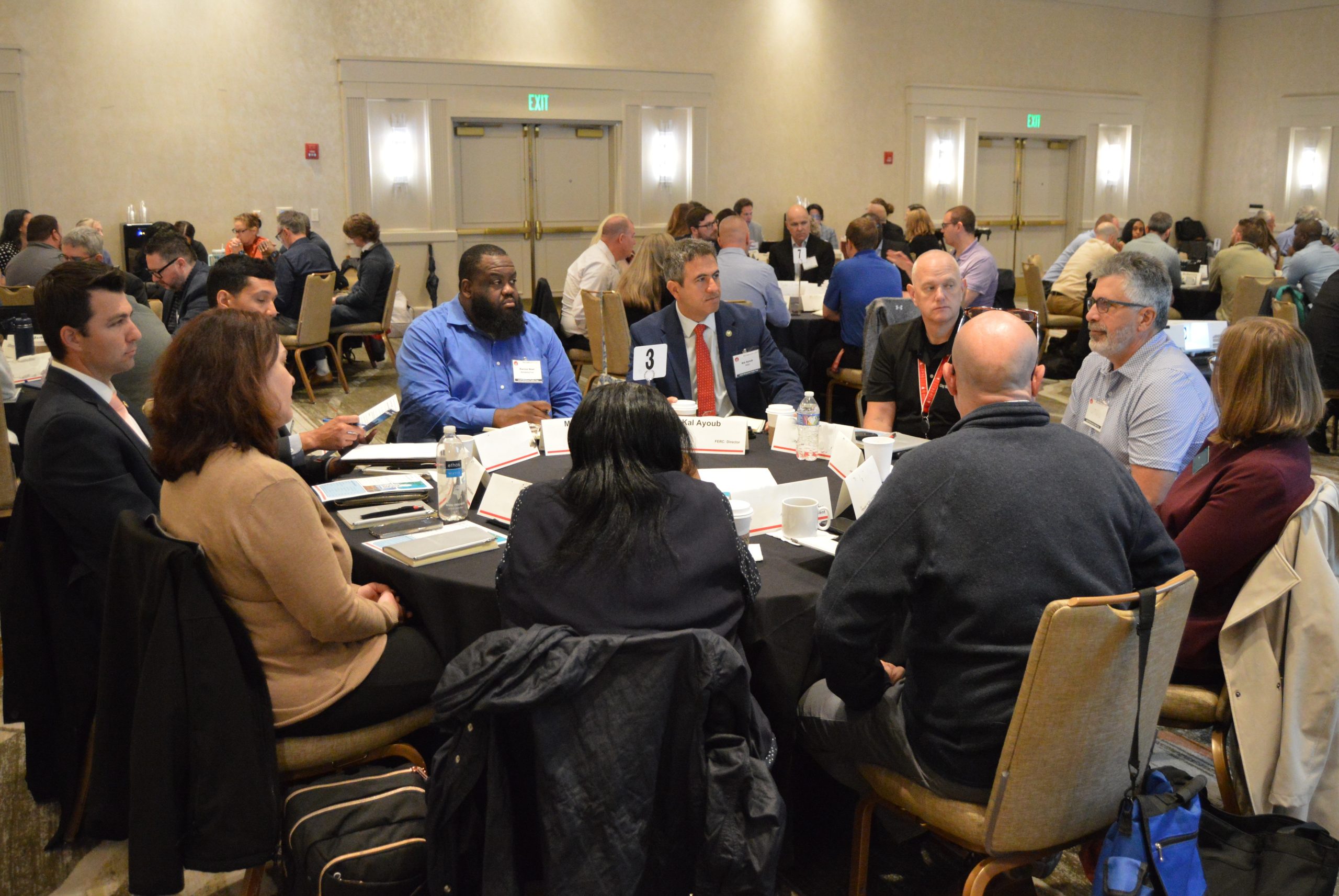
RF hosts grid disturbance security tabletop in Maryland
ReliabilityFirst hosted its third statewide security tabletop exercise in Gaithersburg, Maryland, on May 28. This event brought together utility professionals, emergency management personnel, first responders, elected officials, business leaders, and other stakeholders.
This year’s event was focused around the Maryland, Delaware and Washington, D.C. areas, and the simulated exercise offered attendees the opportunity to improve their disaster and emergency response preparedness, identify potential vulnerabilities in their systems, make connections across various critical infrastructure sectors and strengthen their communication channels.
 NERC issues 2025 Summer Reliability Assessment
NERC issues 2025 Summer Reliability Assessment
NERC released its annual 2025 Summer Reliability Assessment on May 14.
The assessment predicts that all regions of the North American electric grid are expected to have sufficient resources under normal operating and weather conditions this summer, but that some regions (specifically MISO, SPP, ERCOT, and parts of New England) may face supply shortfall risks during periods of extreme heat.
NERC also published an infographic and a video highlighting some of the key findings in the assessment.
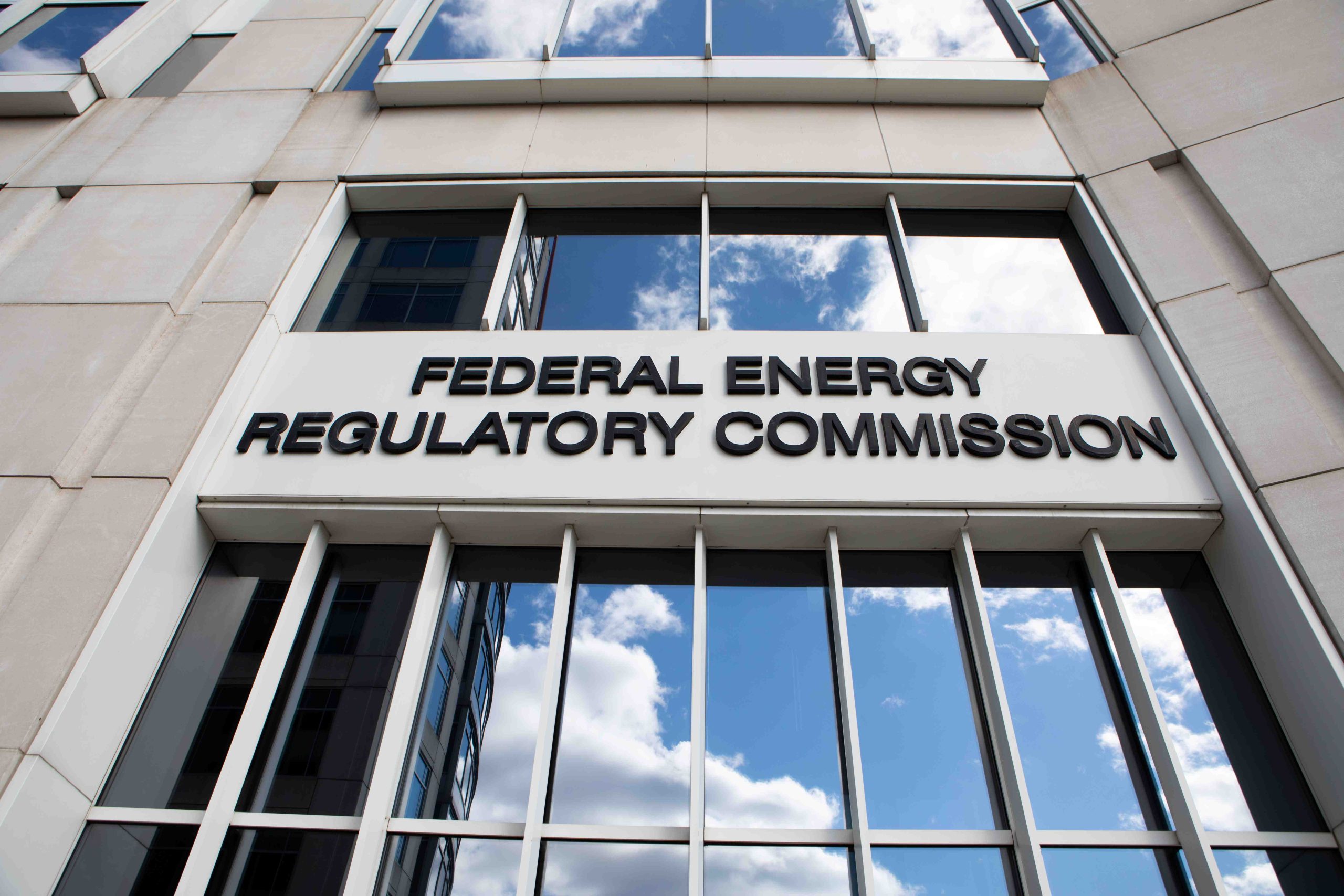 FERC holds technical conference on resource adequacy
FERC holds technical conference on resource adequacy
FERC hosted a technical conference on resource adequacy on June 4-5, at the FERC headquarters in Washington, D.C.
Panel one included senior leadership from the RTO/ISOs and NERC and focused more generally on defining resource adequacy and identifying resource adequacy challenges that occurred across RTOs/ISOs.
Panels two, three, and four focused on resource adequacy in PJM, with panel three featuring a discussion between the FERC Commissioners and state representatives on the state of resource adequacy and the role of states in achieving resource adequacy in PJM.
Panels five and six focused on resource adequacy challenges specific to MISO, including a discussion with state representatives on resource adequacy.
The webcast recording for Day 1 of the conference is linked here and Day 2 of the conference is linked here.
 House subcommittee holds hearing on meeting growing energy demand
House subcommittee holds hearing on meeting growing energy demand
The House Committee on Energy and Commerce’s Energy Subcommittee held a hearing on “Assuring Abundant, Reliable American Energy to Power Innovation” on April 30.
The witnesses at the hearing included Mike Goff, acting undersecretary of energy at the Department of Energy; David Morenoff, acting general counsel at FERC; and Terry Turpin, director of the Office of Energy Projects at FERC. The witness testimonies are included at the hyperlinks added to each witness’s name above.
There was general consensus among the witnesses and House members that it is important to add significant amounts of new generation to the system to meet the growing demand created in part by artificial intelligence (AI) and data centers. There was also bipartisan agreement on the importance of being competitive with China in the “AI race.”
While many at the hearing agreed that generation of all types will be needed to meet demand, debate centered around the proper mix of and incentives for renewables vs. dispatchable generation, and the specifics of recent executive actions of the Trump administration related to energy policy. Morenoff noted that given the country’s recent rapid load growth, it is important to add new resources to the system as well as retain existing ones.
The recorded hearing is available to stream online here.
The post State Energy Insights from ReliabilityFirst: June 2025 appeared first on ReliabilityFirst.
]]>The post State Energy Insights from ReliabilityFirst: May 2025 appeared first on ReliabilityFirst.
]]>
State Energy Insights: May 2025
Grid Reliability and Regulatory Updates from ReliabilityFirst
Upcoming Events

May 15, 10-11 a.m. ET | FERC Open Meeting
The Federal Energy Regulatory Commission (FERC) will hold an open meeting on Thursday, May 15. There will be a webcast link available on the FERC website.

May 27, 8:30-10 a.m. ET | Tech Talk with RF
Join us for our next Tech Talk on Tuesday, May 27! Bill Smith will be discussing the impact of renewable generation on Power Systems Operation through a simulated OPS-X exercise, an interactive training tool developed by his company, Powersmiths International.
 Sept. 8-10, 2025 | RF Fall Reliability & Security Summit
Sept. 8-10, 2025 | RF Fall Reliability & Security Summit
Save the date for RF’s 2025 Fall Reliability & Security Summit! This year’s event is planned for Sept. 8-10 in the Washington, D.C., area. Stay tuned for more details.
 Nov. 18-19, 2025 | GridEx VIII
Nov. 18-19, 2025 | GridEx VIII
GridEx is the largest grid security exercise in North America, hosted every two years by the NERC Electricity Information Sharing and Analysis Center (E-ISAC). It offers E-ISAC member and partner organizations a forum in which to practice how they would respond to and recover from coordinated cyber and physical security threats and incidents.
The last event in 2023 saw more than 15,000 participants come together from approximately 250 North American organizations, including the electric industry, cross-sector partners from gas and telecommunications, and U.S. and Canadian government partners.
News & Updates
 Impact Report highlights collaboration, outreach, and compliance work at center of RF’s mission to ensure electric grid reliability and security
Impact Report highlights collaboration, outreach, and compliance work at center of RF’s mission to ensure electric grid reliability and security
ReliabilityFirst published its 2024 Impact Report, highlighting the value of our collaboration, outreach and compliance efforts to ensure the reliability and security of the electric grid.
This document captures RF’s work in action in 2024, as well as some of the trends and takeaways we’ve seen in the enforcement and noncompliance space as well as potential threats to the grid.
The Impact Report also serves as a great high-level resource for our stakeholders to better get to know our organization at a glance.
Click here to read the full report and watch our video below.
 NERC chief engineer highlights potential grid disturbances attributable to data centers
NERC chief engineer highlights potential grid disturbances attributable to data centers
NERC Chief Engineer Mark Lauby presented at FERC’s April open meeting about potential grid disturbances attributable to data centers, and cited examples of large offline trips in Virginia and Texas.
The risk associated with losing multiple large loads is the disruption of frequency leading to potential trips across the system (discussed in a recent NERC incident review report).
To address this emerging risk, NERC has assembled a Large Load Task Force to make recommendations. NERC is also considering rule changes requiring registration for large loads (or the entities serving the load), and crafting reliability standards to minimize the risk of simultaneous large load trips. NERC’s announcement contains additional information.
 FERC issues joint performance report on January 2025 arctic events
FERC issues joint performance report on January 2025 arctic events
On April 17, FERC released the joint FERC, NERC, and Regional Entity System Performance Report on January 2025 Arctic Events. The report focuses on the grid’s performance during January 2025’s winter storms Blair, Cora, Demi, and Enzo. The report team sent information requests to and met with ten participating sample entities across the Eastern and Texas Interconnections.
The report states that between Jan. 21-22, 2025, natural gas demand peaked at 150 Bcf/day, electric demand peaked at 683 GW (including new demand peaks for many entities), and unplanned generator outages peaked at 71,022 MW. However, manual load shed was not required during the January events even though they lasted 21 days, a longer period than past winter storms that caused impacts to the grid.
The report states that this improved performance is in part due to better communication and coordination between the natural gas and electric industries. However, this can be inconsistent depending on the natural gas provider at issue, and additional improvements are needed. There was also better coordination within the electric industry, with entities stating that an increase in reliability coordinator-to-reliability coordinator calls helped to prepare for the winter storms.
Many participating entities stated that generators performed better during the January 2025 events than in prior winter storms. The report team looked at the causes of generator outages, and of those that had a reported event cause, 54% were due to mechanical or electrical issues, 34% were due to fuel issues, 18% were due to freezing issues, and 5% were due to other causes. Participating entities noted that generators with dual-fuel capabilities helped maintain reliability during natural gas system constraints, and that battery storage also played a role in maintaining reliability (for example, in ERCOT the rapid deployment of battery storage resulted in batteries providing 3,800 MW during peak demand times).
Entities also said that prior winter storm experiences have helped them improve their load forecasting abilities, which led to less forecasting errors during the 2025 winter storms. The report team concluded that winter preparedness has improved, but that additional improvement is still needed and it is important to continue to implement recommendations from the Winter Storm Uri and Elliott reports, the December 2023 blackstart study, and the January 2024 Winter Storms Gerri and Heather system performance review.
 House Committee on Energy and Commerce holds hearing on AI development in U.S.
House Committee on Energy and Commerce holds hearing on AI development in U.S.
The House Committee on Energy and Commerce held a hearing on “Converting Energy into Intelligence: The Future of AI Technology, Human Discovery, and American Global Competitiveness” on April 9.
The witnesses were Eric Schmidt, chair of the Special Competitive Studies Project and former Google chairman and CEO; Manish Bhatia, executive vice president of Global Operations, Micron Technology; Alexandr Wang, founder and CEO, Scale AI; and David Turk, distinguished visiting fellow, Center on Global Energy Policy, Columbia University, and former deputy secretary of the DOE.
Congress members and witnesses discussed the importance of the U.S. leading the way in AI development, with some noting that it is a national security imperative to develop advanced AI capabilities before China does. Schmidt stated that the amount of energy needed for AI is “profound” and that all forms of energy are needed quickly (from both conventional resources and renewables). There was also discussion on how small modular nuclear reactors could be an ideal energy source for AI, but that these are not currently in use in the U.S. and that the regulatory approval process for them needs to be streamlined. A recording of the hearing is available here.
The post State Energy Insights from ReliabilityFirst: May 2025 appeared first on ReliabilityFirst.
]]>The post First Things RFirst: May 2025 appeared first on ReliabilityFirst.
]]>
First Things RFirst: May 2025
Expert analysis for a more reliable, secure and resilient electric grid, plus news and updates for RF stakeholders.
News & Updates
 Impact Report highlights collaboration, outreach, and compliance work at center of RF’s mission to ensure electric grid reliability and security
Impact Report highlights collaboration, outreach, and compliance work at center of RF’s mission to ensure electric grid reliability and security
ReliabilityFirst published its 2024 Impact Report, highlighting the value of our collaboration, outreach and compliance efforts to ensure the reliability and security of the electric grid.
This document captures RF’s work in action in 2024, as well as some of the trends and takeaways we’ve seen in the enforcement and noncompliance space as well as potential threats to the grid.
The Impact Report also serves as a great high-level resource for our stakeholders to better get to know our organization at a glance.
Click here to read the full report and watch our video below.
Insights & Analysis
The Lighthouse: CIP low impact from the ground up – Part 7, Governance and policy
In Part 7 of Lew Folkerth’s series exploring the NERC CIP Standards applicable to low impact BES Cyber Systems, he turns his focus to governance and policy. Lew offers CIP Senior Managers his suggestions on leveraging cyber security policy to further their management goals, expectations, and aspirations, when it comes to their organizations’ CIP security management controls posture.
Regulatory Affairs: Grid reliability news we’re tracking
The latest regulatory headlines we’re tracking include:
- House Committee on Energy and Commerce holds hearing on AI development in U.S.
- NERC chief engineer highlights potential grid disturbances attributable to data centers
- Executive Order calls for grid to utilize all available generation sources to ensure reliability amid growing electricity demand
- FERC issues joint performance report on January 2025 arctic events
Upcoming Events
May 27, 8:30-10 a.m. ET | Tech Talk with RF
Join us for our May edition of Tech Talk with RF! Please note the scheduling change for this month’s webinar, which will be on Tuesday, May 27, from 8:30-10 a.m. ET. Bill Smith will be discussing the impact of renewable generation on Power Systems Operation through a simulated OPS-X exercise, an interactive training tool developed by his company, Powersmiths International.

May 20-21, 2025 | MRO Reliability, Security, and CMEP Summit
MRO will host its 2025 Reliability, Security, and CMEP Summit May 20-21 in Oklahoma City. There will also be a virtual option.
June 16, 2- 3:30 p.m. ET | Tech Talk with RF
Save the date for our June edition of Tech Talk with RF! We’ll be back to our normal Monday afternoon timeslot on June 16, from 2-3:30 p.m. ET. Stay tuned for agenda details to be posted on our website calendar and LinkedIn feed.
 Aug. 6, 9 a.m. – 1 p.m. ET | Protection System Workshop
Aug. 6, 9 a.m. – 1 p.m. ET | Protection System Workshop
Register now for RF’s 11th Protection System Workshop on Aug. 6, 2025. This event will be held virtually via WebEx. The agenda and additional information are currently being developed and will be available soon.
 Aug. 7, 9 a.m. – 1 p.m. ET | Human Performance Workshop
Aug. 7, 9 a.m. – 1 p.m. ET | Human Performance Workshop
Register now for RF’s 8th Annual Human Performance Workshop on Aug. 7, 2025. This event will be held virtually via WebEx. The agenda and additional information are currently being developed and will be available soon.
 Sept. 8-10, 2025 | RF Fall Reliability & Security Summit
Sept. 8-10, 2025 | RF Fall Reliability & Security Summit
Save the date for RF’s 2025 Fall Reliability & Security Summit! This year’s event is planned for Sept. 8-10 in the Washington, D.C., area. Stay tuned for more details.
 Nov. 18-19, 2025 | GridEx VIII
Nov. 18-19, 2025 | GridEx VIII
GridEx is the largest grid security exercise in North America, hosted every two years by the NERC Electricity Information Sharing and Analysis Center (E-ISAC). It offers E-ISAC member and partner organizations a forum in which to practice how they would respond to and recover from coordinated cyber and physical security threats and incidents.
The last event in 2023 saw more than 15,000 participants come together from approximately 250 North American organizations, including the electric industry, cross-sector partners from gas and telecommunications, and U.S. and Canadian government partners.
To explore our full calendar of upcoming events, click here.
The post First Things RFirst: May 2025 appeared first on ReliabilityFirst.
]]>The post Impact Report highlights RF’s value to electric grid reliability and security appeared first on ReliabilityFirst.
]]>ReliabilityFirst published its 2024 Impact Report Monday, highlighting the value of our collaboration, outreach and compliance efforts to ensure the reliability and security of the electric grid.
This document captures RF’s work in action in 2024, as well as some of the trends and takeaways we’ve seen in the enforcement and noncompliance space as well as potential threats to the grid.
The Impact Report also serves as a great high-level resource for our stakeholders to better get to know our organization at a glance.
Click here to read the full report and watch the video below to learn more about RF and some of our top priorities and accomplishments in 2024.
###
ReliabilityFirst is one of six regional organizations which, in conjunction with the North American Electric Reliability Corporation (NERC), are known as the Electric Reliability Organization (ERO) Enterprise, responsible for ensuring the reliability and security of the North American Bulk Electric System. We promote the reliability and security of the electric grid through standards, outreach, training and analysis, that includes partnership with communities and experts. We are based out of Cleveland, Ohio, and our footprint includes the Great Lakes and Mid-Atlantic areas of the United States.
The post Impact Report highlights RF’s value to electric grid reliability and security appeared first on ReliabilityFirst.
]]>